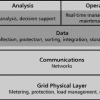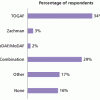Strategic advice to leverage new technologies
Technology is at the heart of nearly every enterprise, enabling new business models and strategies, and serving as the catalyst to industry convergence. Leveraging the right technology can improve business outcomes, providing intelligence and insights that help you make more informed and accurate decisions. From finding patterns in data through data science, to curating relevant insights with data analytics, to the predictive abilities and innumerable applications of AI, to solving challenging business problems with ML, NLP, and knowledge graphs, technology has brought decision-making to a more intelligent level. Keep pace with the technology trends, opportunities, applications, and real-world use cases that will move your organization closer to its transformation and business goals.
Recently Published
There's a brand-new layer of digital intelligence being conceived upon the world's century-old electric power grid by way of your regional electric power utility, through your new smart meter, and extending into your future home and business energy management systems and smart appliances. It's called the Smart Grid.
The Electric Power Research Institute defines it as follows:
In August, I said that we are seeing an increasing number of organizations developing mobile BI applications (see "Mobile BI Comes of Age," 10 October 2010).
EA in Academia
Enterprise Architecture 2010: Part I -- Current Practices
A few years ago, when applications started exploding into collections of services -- in the service-oriented architecture (SOA) sense -- a challenge that soon appeared was the number of new skills that an IT architect needed to succeed in this new world. With Web-based collaboration platforms, such as the one just described, we will face the same issue.















